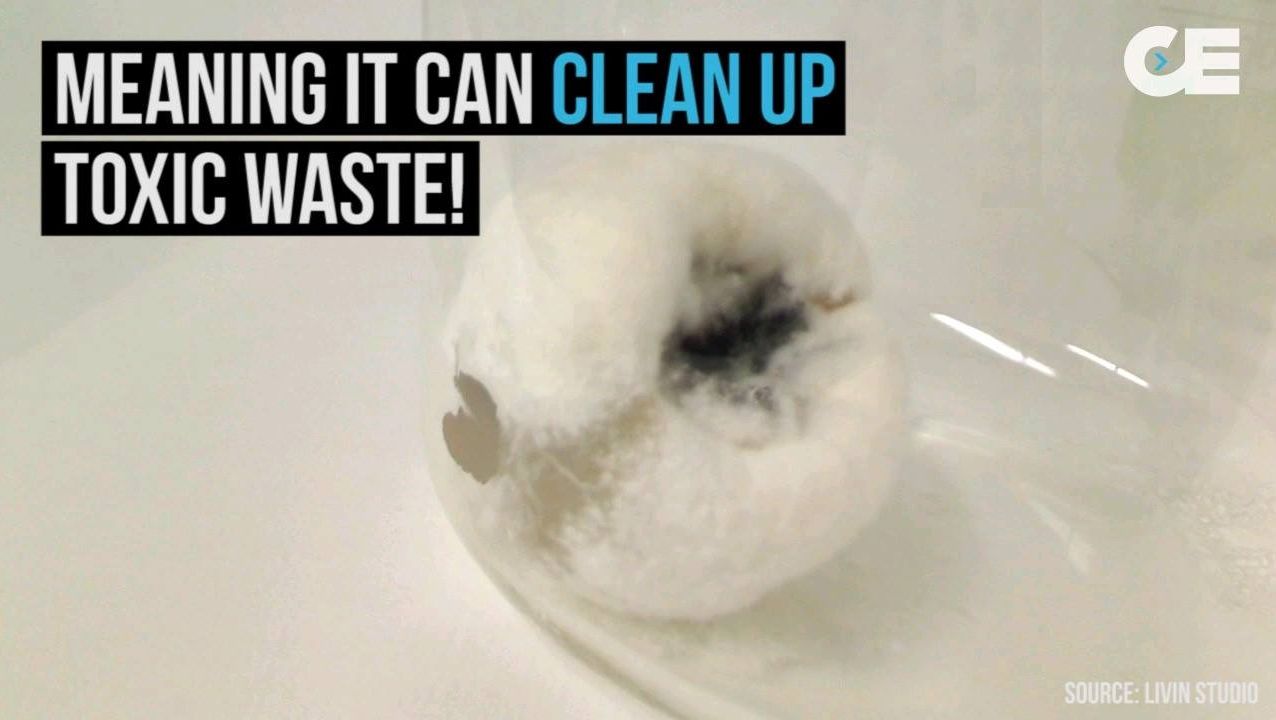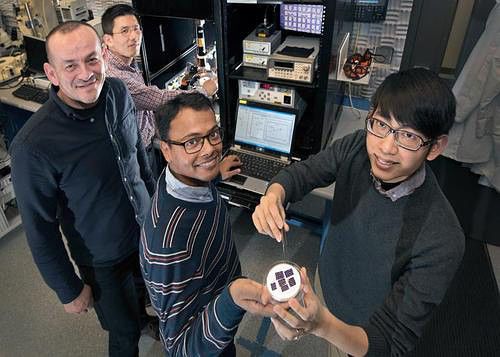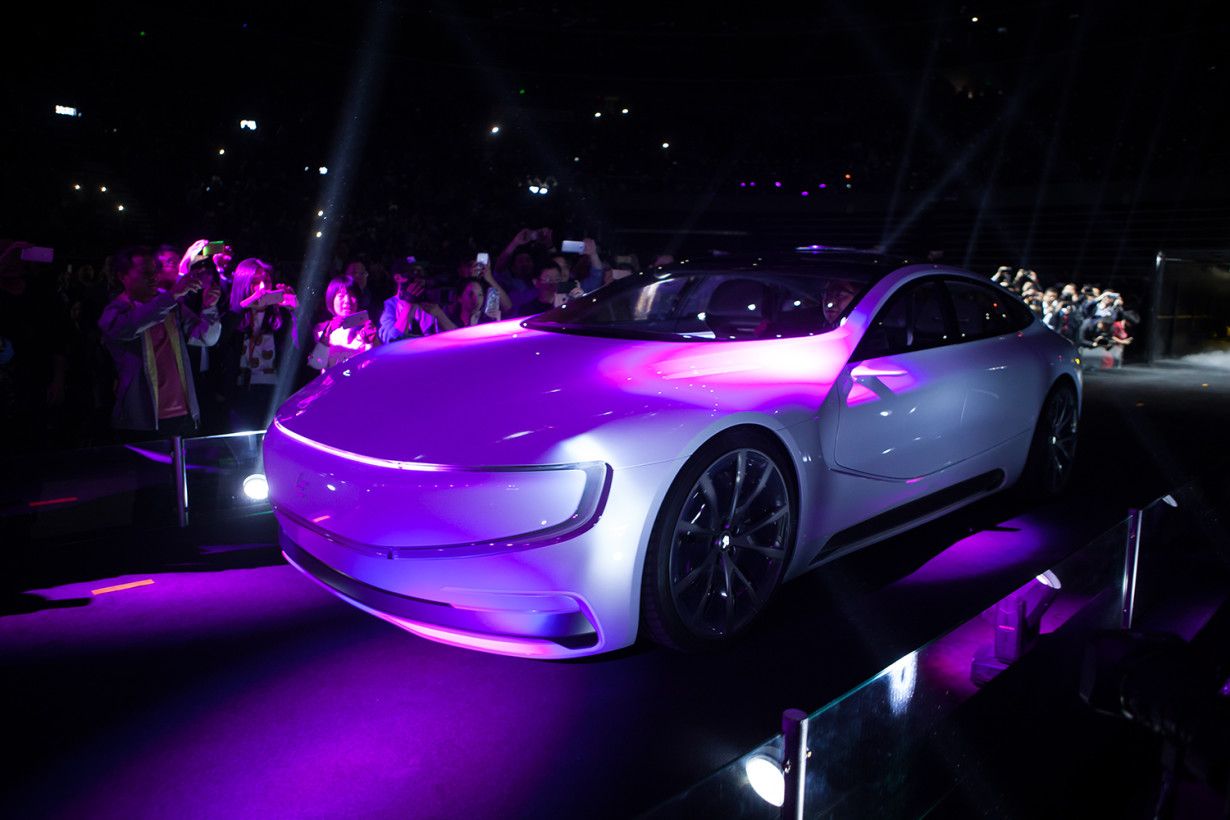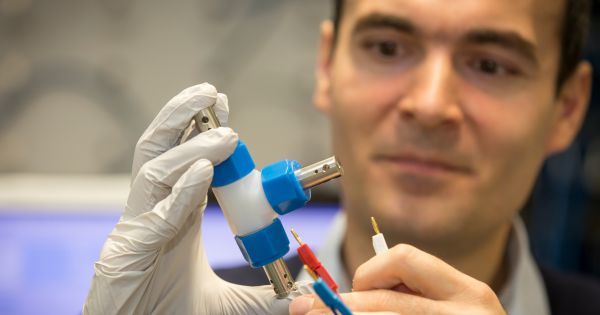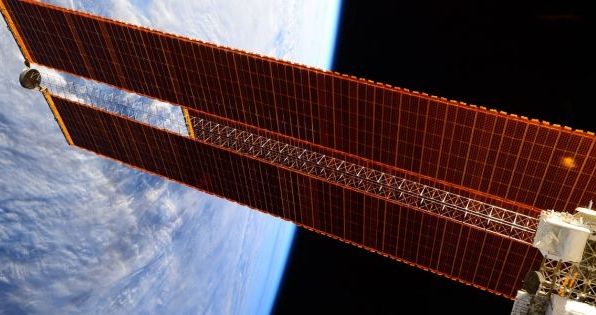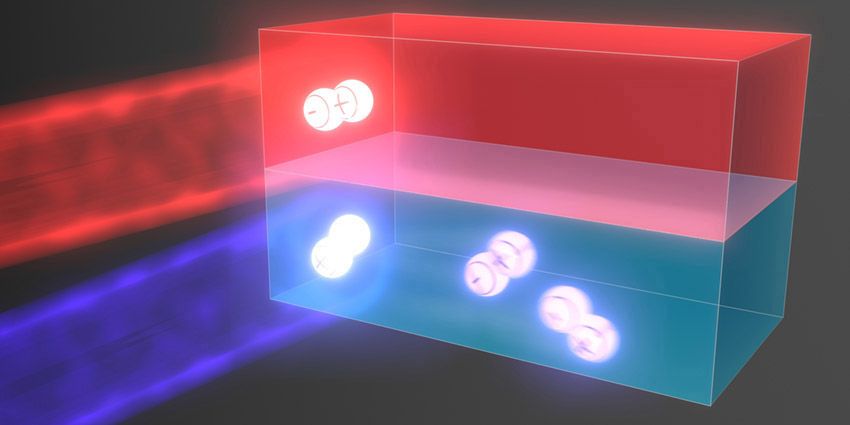Archive for the ‘sustainability’ category: Page 589
Apr 21, 2016
Post-Paris: Taking Forward the Global Climate Change Deal | Chatham House
Posted by Odette Bohr Dienel in categories: environmental, geopolitics, governance, government, law, policy, science, sustainability, treaties
“Inevitably, the compromises of the Paris Agreement make it both a huge achievement and an imperfect solution to the problem of global climate change.”
Apr 20, 2016
Quantum dots amplifies solar cell output
Posted by Karen Hurst in categories: quantum physics, solar power, sustainability
The researchers call their material a hybrid because they dope the electrical conductivity of layered tin disulfide semiconductor with the light harvesting of different spectrums of light from various sized quantum dots.
Apr 20, 2016
This Chinese company just leap-frogged Tesla in the autonomous electric car race
Posted by Shailesh Prasad in categories: robotics/AI, sustainability, transportation
Tesla may have been playing with autonomous cars for a while, but this Chinese company has taken it to the next level with this whopper.
Apr 18, 2016
IIT to Develop Nanosensors to Boost Farm Productivity
Posted by Karen Hurst in categories: electronics, food, sustainability
Nice
HYDERABAD: In an initiative that may improve farm productivity, Indian Institute of Technology (IIT), Mumbai and Professor Jayashankar Telangana State Agriculture University (PJTSAU), Hyderabad have joined hands to develop nanosensors that can read the percentage of moisture and nutrients in the soil. This new research is expected to provide an important technological innovation in the field of agriculture. This is for the first time an IIT is collaborating with an agricultural university to devise solutions for the farmers.
“While we were exploring the possibilities of nano technology in various fields, the idea of using it in agriculture sector struck us. Thanks to the interest shown by some agricultural scientists at PJTSAU, we decided to develop nanosensors which can calculate the moisture content of the soil. There is a need for IITs to work for solving the problems faced by farmers and this is a step in that direction,” said V Ramgopal Rao, director of IIT Delhi, who was instrumental in initiating the research project, while he was the chief investigator of Centre of Excellence in Nanoelectronics Project at IIT, Mumbai.
While IIT, Mumbai will develop the nano soil sensors, PJTSAU will serve as the testing partner and conduct field tests to assess the efficacy of nanosensors. Already, funds have been allotted by IIT for the research project and a team of agricultural scientists and technologists has been formed to work on the project.
Continue reading “IIT to Develop Nanosensors to Boost Farm Productivity” »
Apr 18, 2016
Kumaun Univ’s project to turn plastic waste to graphene bags Rs 2 crore grant
Posted by Karen Hurst in categories: biotech/medical, computing, sustainability
Like it — turning those old plastic into Graphene bags.
Summary: The project will also motivate people to collect used plastic bottles and other plastic waste, which is degrading to the environment, and help us in putting it to good use. Once the varsity is able to make graphene out of the plastic waste, it can eventually also be used as an alternate source of energy. We received an approval letter for the project proposal on April 16 and the initial grant of Rs 1,97,88,800 for a period of three years has been approved. “Dhami also said that much of the encouragement for research work in the varsity came from governor K K Paul, who has been motivating universities in the state to pursue research in nano science and nano technology. In fact, even wrappers and packets of chips are an environmental hazard.
DEHRADUN: A project proposed by Kumaun University in Nainital to synthesize graphene from plastic waste to use the material in energy and biomedical applications has received approval for a grant of nearly Rs 2 crore. Confirming that the grant has been approved, vice-chancellor of Kumaun University, H S Dhami, said, “It is a great achievement as the varsity aims at contributing to the society through research work. We received an approval letter for the project proposal on April 16 and the initial grant of Rs 1,97,88,800 for a period of three years has been approved.” The grant has been approved by The National Mission on Himalayan Studies (NMHS), G B Pant Institute of Himalayan Environment and Development (GBPIHED), Ministry of Environment, Forests and Climate Change.
Continue reading “Kumaun Univ’s project to turn plastic waste to graphene bags Rs 2 crore grant” »
Apr 16, 2016
SolaBat: A Hybrid Solar Cell and Battery System
Posted by Shailesh Prasad in categories: solar power, sustainability
SolaBat is developing a hybrid device that utilizes both solar cells and more traditional electrochemical energy storage systems.
Last month, the Austrian Research Promotion Agency (FFG) announced a groundbreaking new project called SolaBat. Spearheaded by a group of researchers at the Graz University of Technology (TU Graz) led by Illie Hanzu, it aims to combine photovoltaic cells and electrochemical energy storage systems into a single hybrid device. Fundamentally, SolaBat plans to create a more simplified system of converting and storing solar power.
“Currently, single systems of photovoltaic cells which are connected together – mostly lead-based batteries and vast amounts of cable – are in use. Solar panels on the roof with a battery in the cellar. This takes up a lot of space, needs frequent maintenance and is not optimally efficient,” says Hanzu. “We want to make a battery and solar cell hybrid out of two single systems which is not only able to convert electrical energy but also store it.”
Apr 16, 2016
Caltech’s 2500 Orbiting Solar Panels Could Provide Earth With Limitless Energy
Posted by Shailesh Prasad in categories: solar power, space, sustainability
The Space Solar Power Initiative (SSPI), a collaboration between Caltech and Northrup Grumman, has developed a system of lightweight solar power tiles which can convert solar energy to radio waves and can be placed in orbit to beam power to an energy-thirsty Earth.
One of the greatest challenges facing the 21st Century is the issue of power—how to generate enough of it, how to manufacture it cheaply and with the least amount of harmful side-effects, and how to get it to users.
The solutions will have to be very creative—rather like what the Space Solar Power Initiative (SSPI), a partnership between Caltech and Northrup Grumman, has devised.
Continue reading “Caltech’s 2500 Orbiting Solar Panels Could Provide Earth With Limitless Energy” »
Apr 15, 2016
Membrane spacecraft with 7.7 kW/kg power-to-weight ratio and 4000 ISP
Posted by Klaus Baldauf in categories: solar power, space travel, sustainability
A ‘brane’ is a dynamical object that can propagate through spacetime. Flattening a spacecraft into a membrane, or 2-brane, can produce a low mass vehicle with ultra-high power-to-weight ratio (7.7 kW/kg using thin film solar cells). If most of this power is used by an array of thinned, distributed electrospray thrusters with a specific impulse of 4000 s, a Brane Craft could start in low Earth orbit, land on Phobos, and return to low Earth orbit.
Other possible targets include any near-Earth asteroid and most main belt asteroids. Propellant is stored as a liquid within a 10-micron wide gap between two Kapton sheets that form the main structure of the Brane Craft.
This NASA NIAC project will study how to design an ultra-light dynamic membrane spacecraft, with 3-axis attitude determination and control plus navigation, that can significantly change both its shape and orbit. Conventional sensors like star trackers will have to be replaced by 2-dimensional alternatives. Estimated mass is about 35 grams for a 1 square meter Brane Craft.
Continue reading “Membrane spacecraft with 7.7 kW/kg power-to-weight ratio and 4000 ISP” »
Apr 13, 2016
Quantum techniques to enhance solar cell efficiency
Posted by Karen Hurst in categories: quantum physics, solar power, sustainability
Luv it — Improving Solar energy with Quantum.
A quantum process called singlet fission could boost solar cell efficiency by harnessing inaccessible parts of the solar spectrum.
